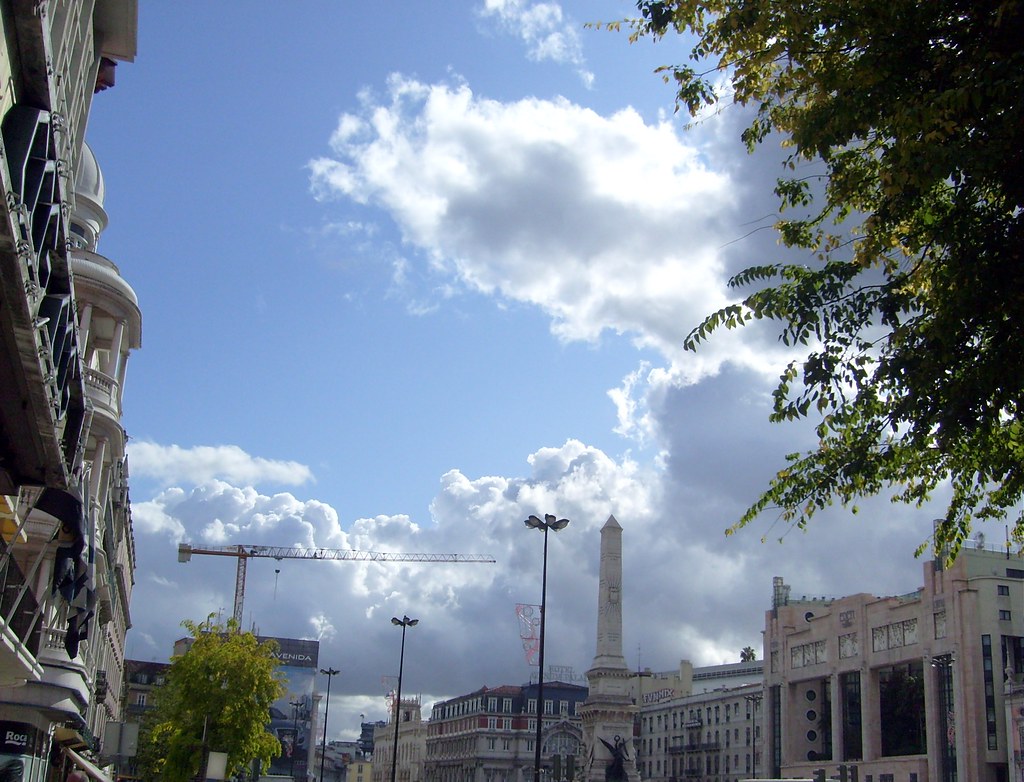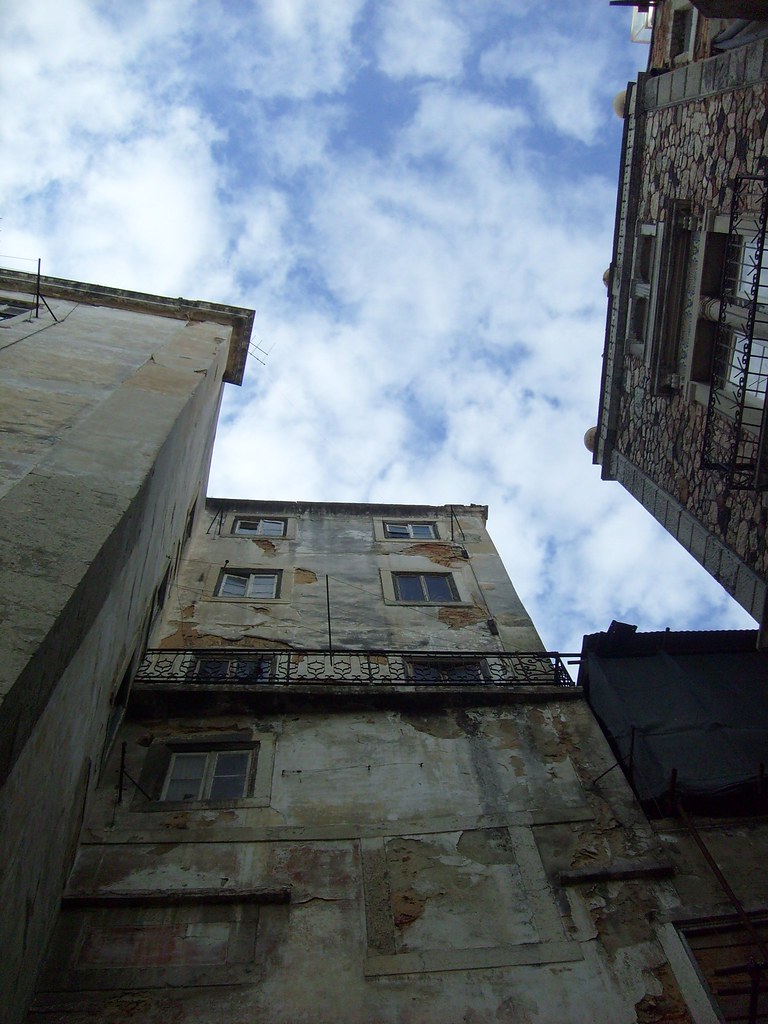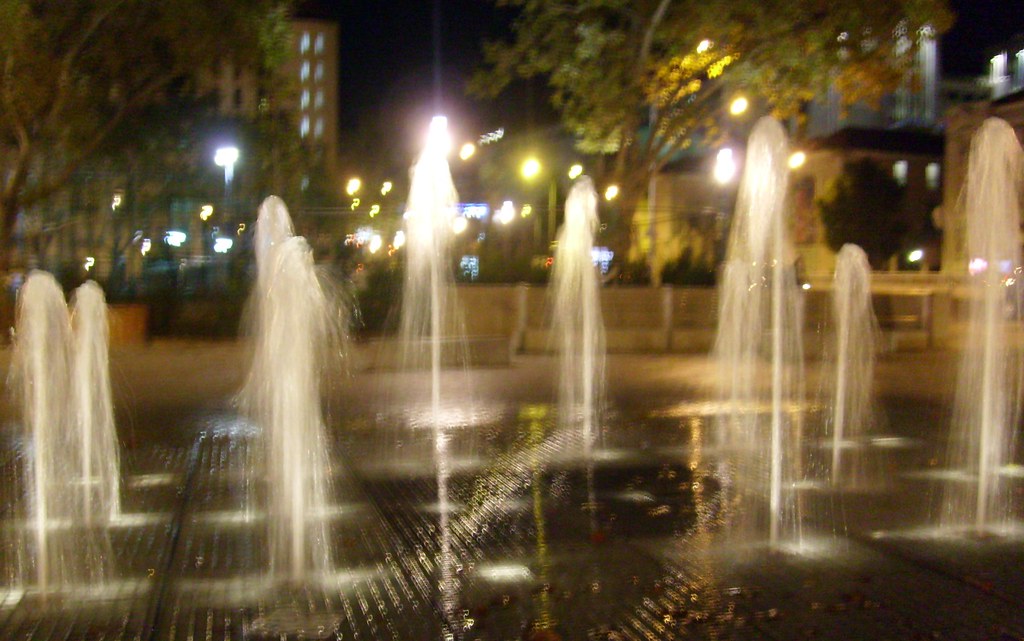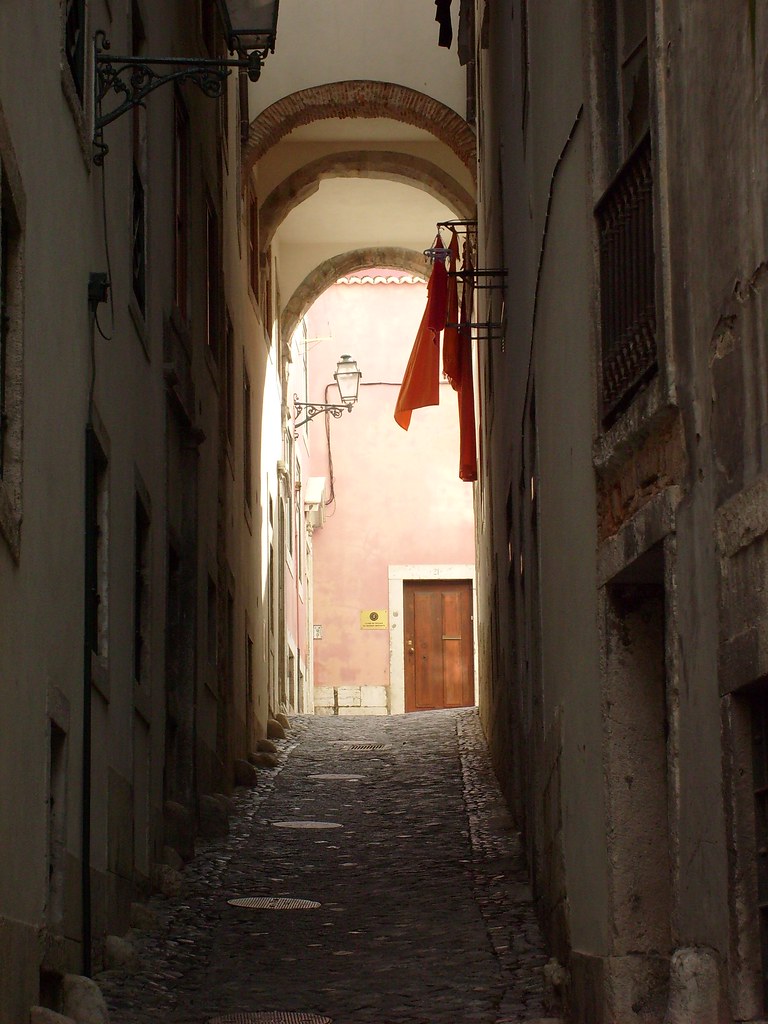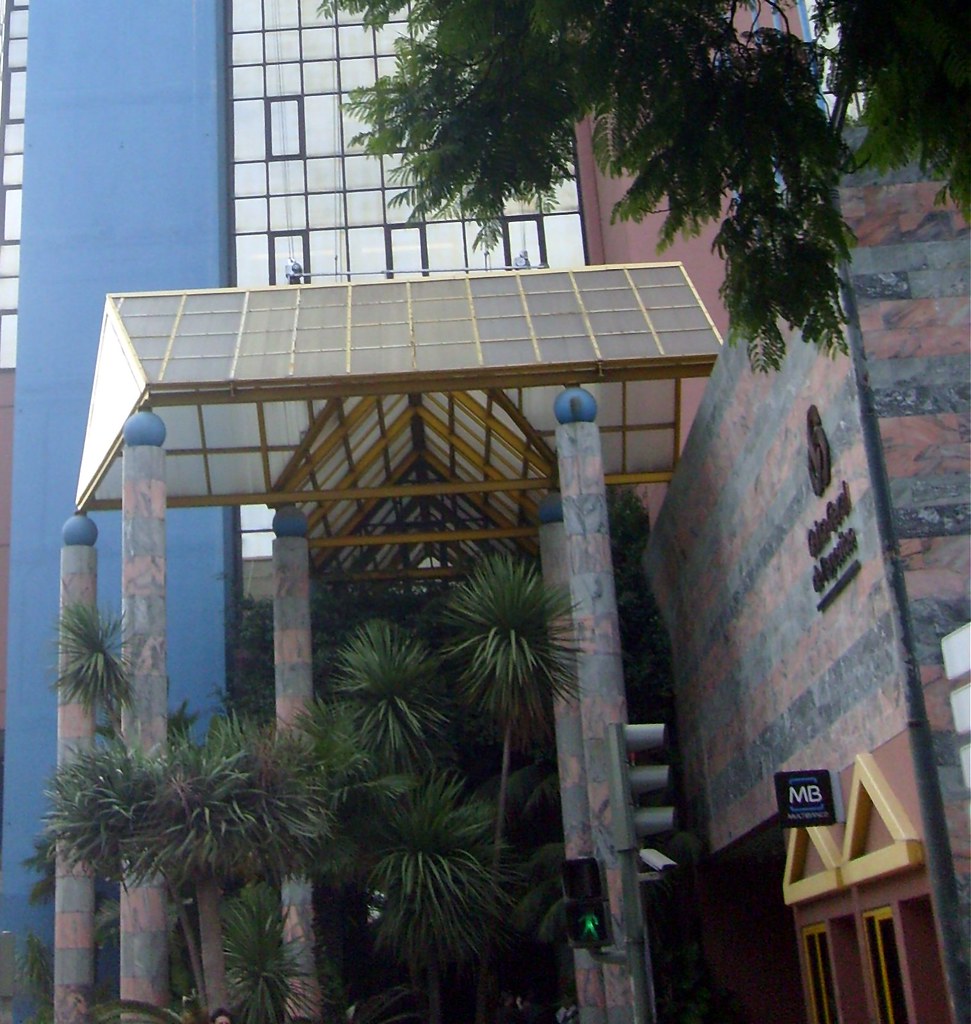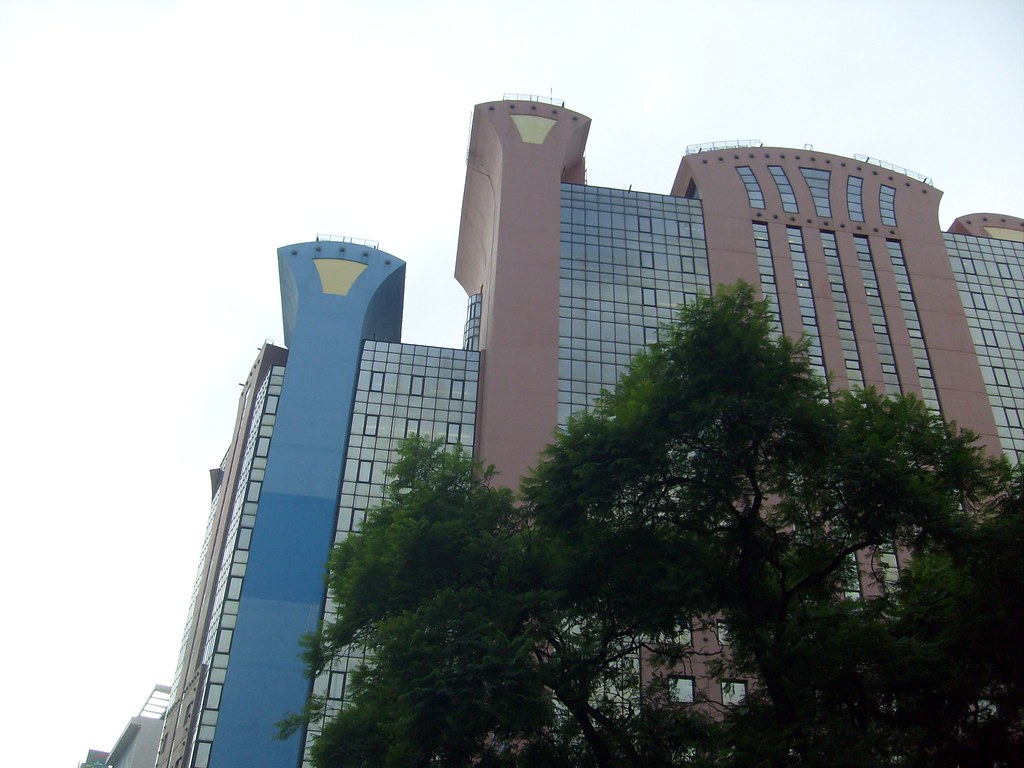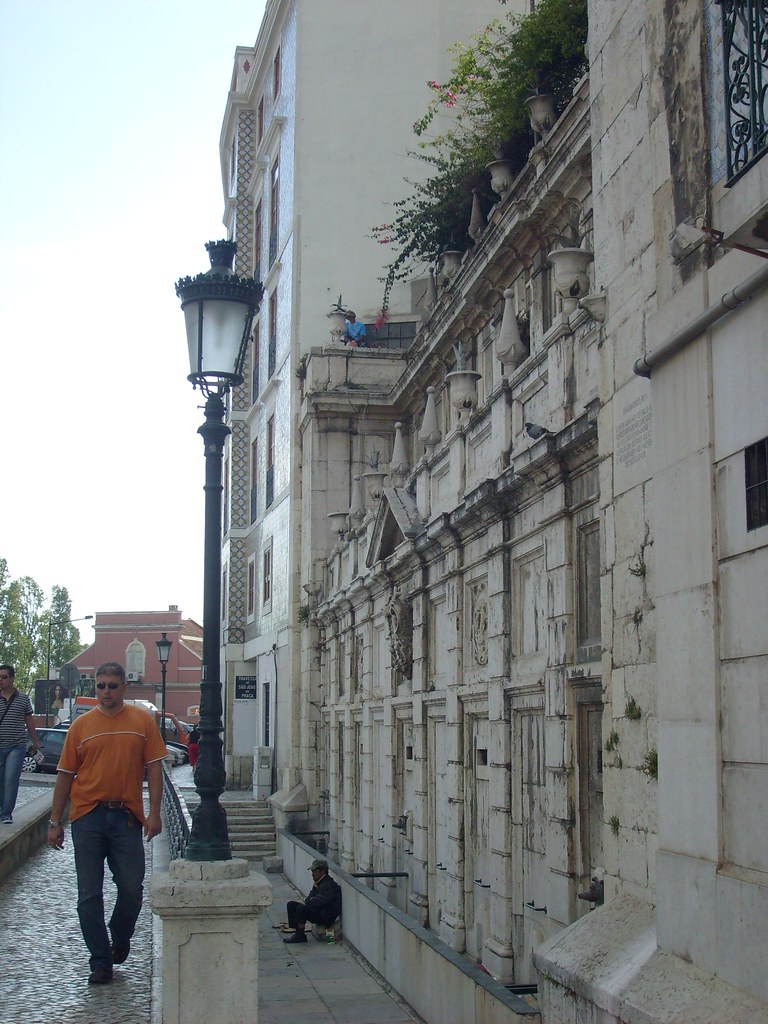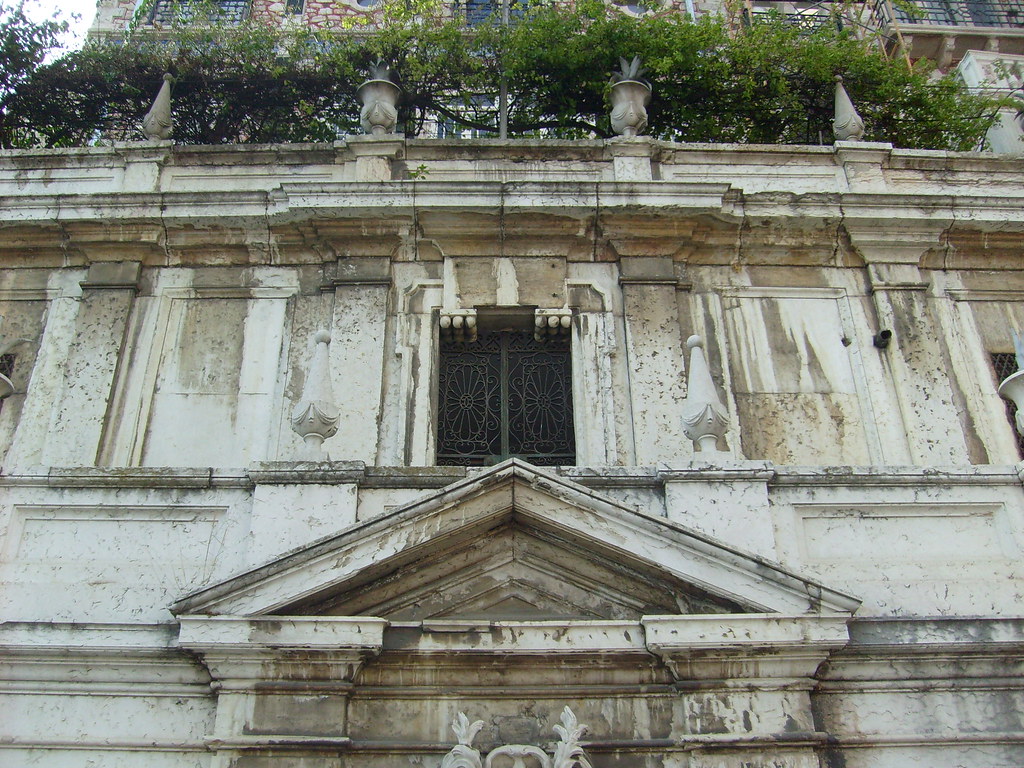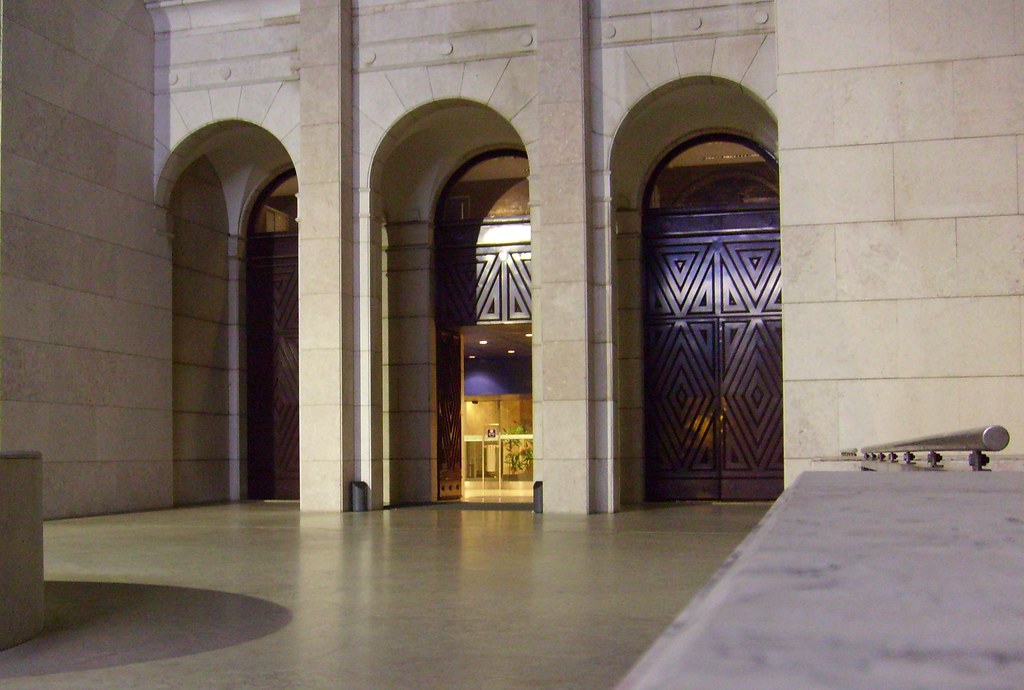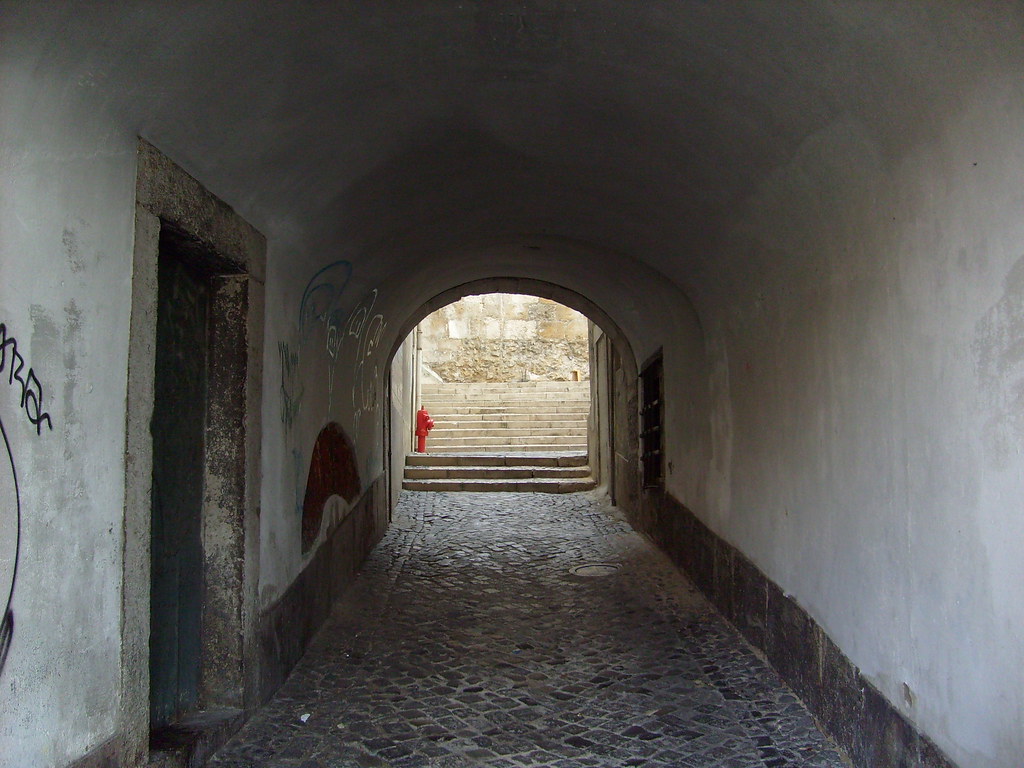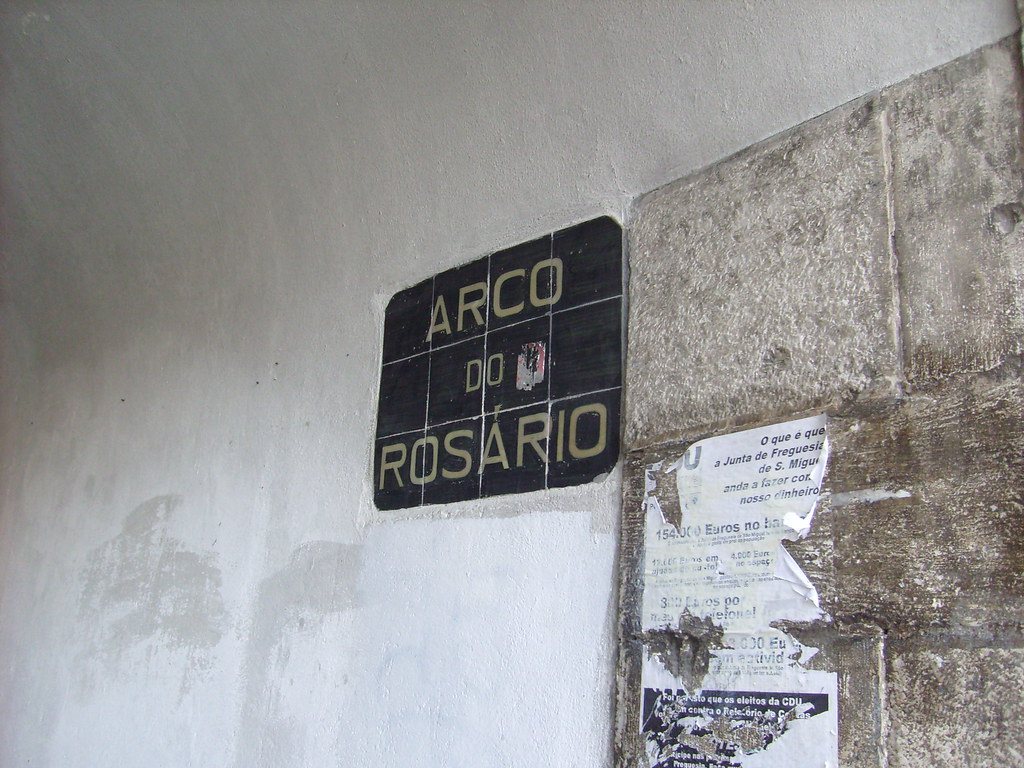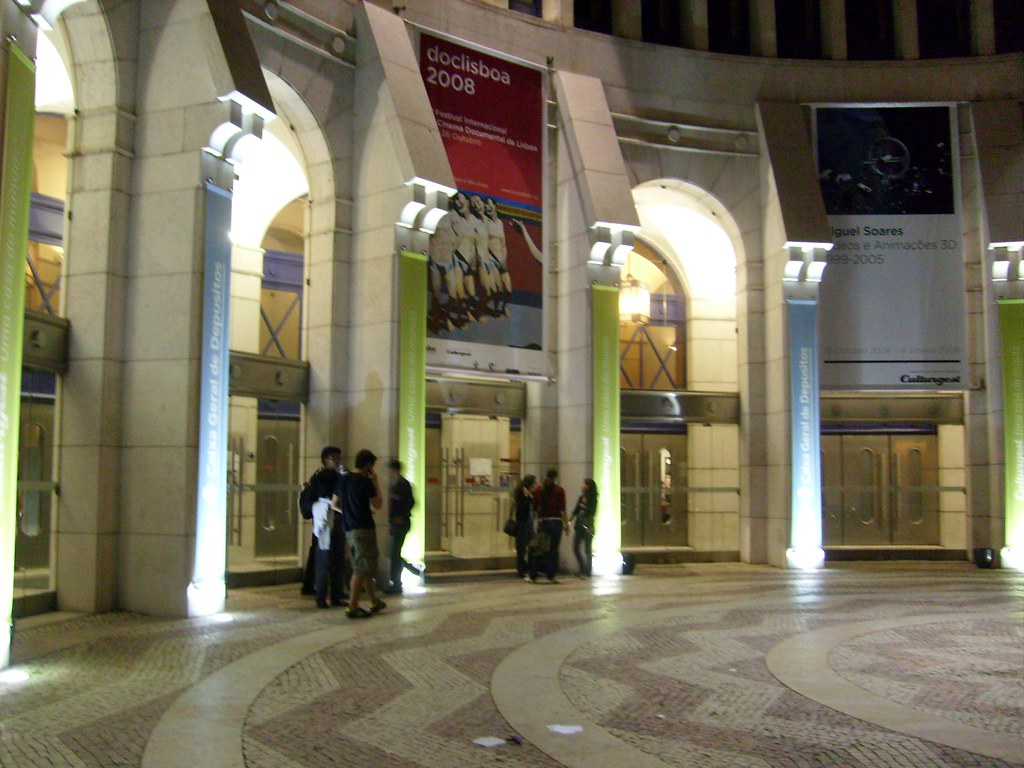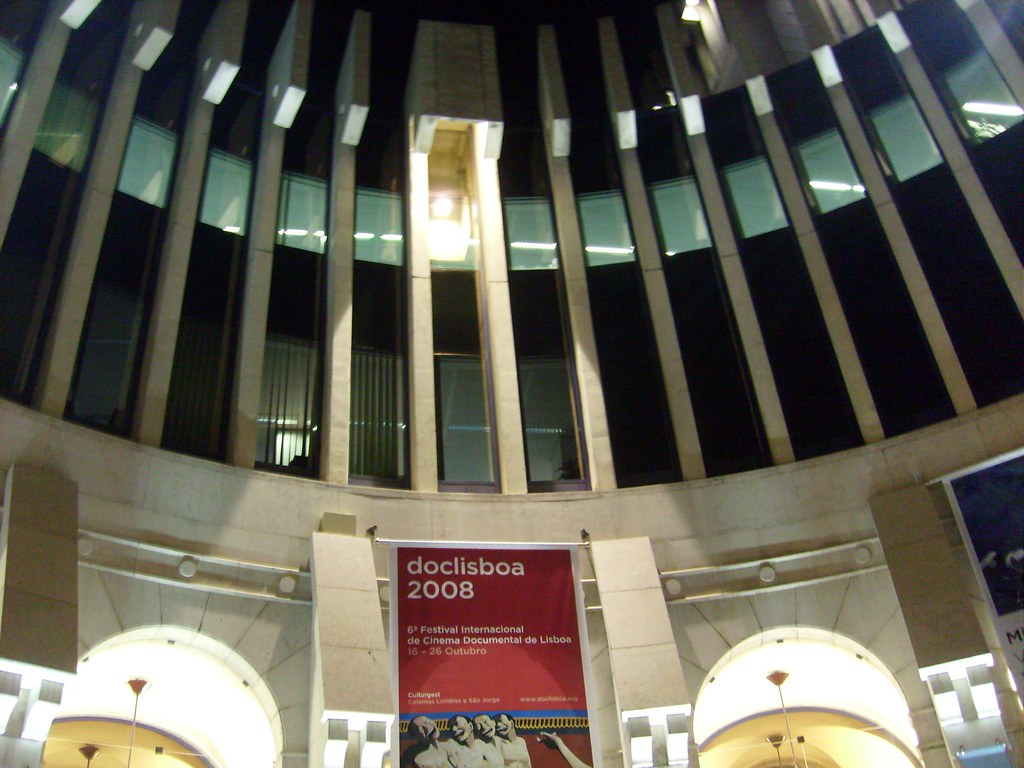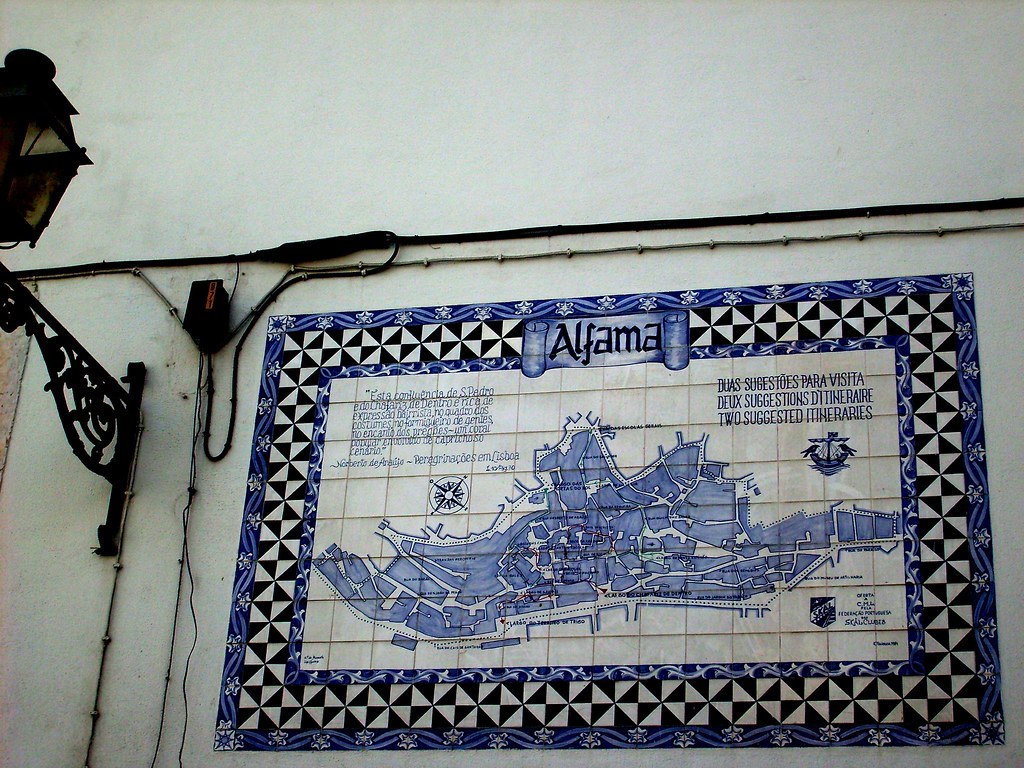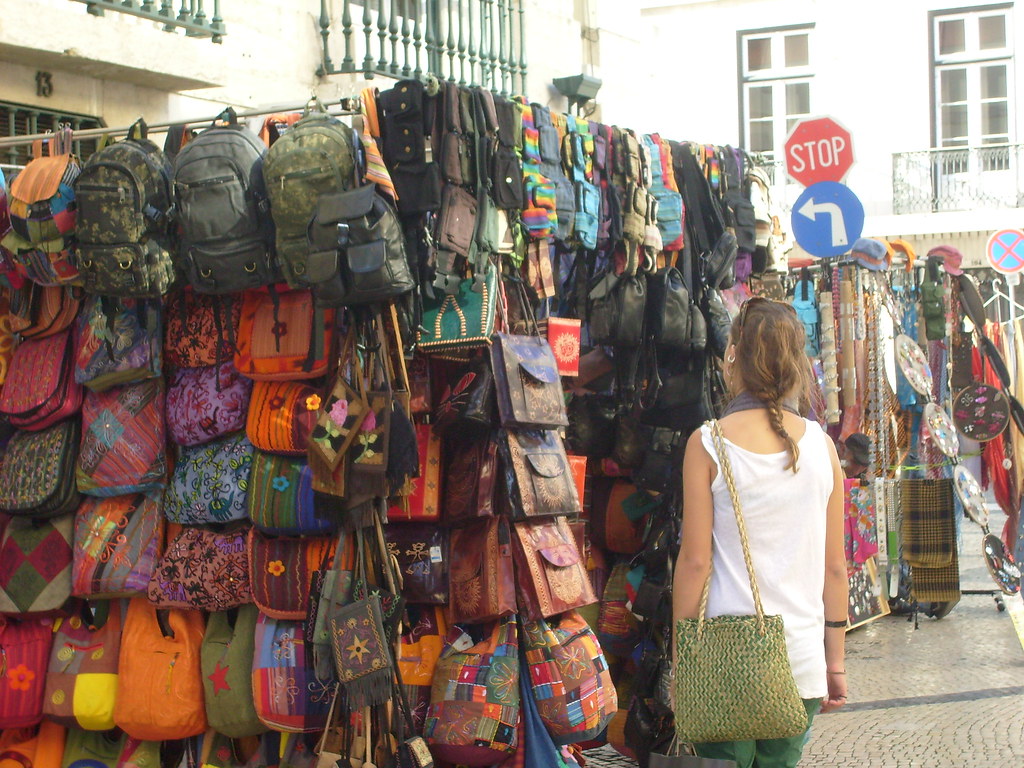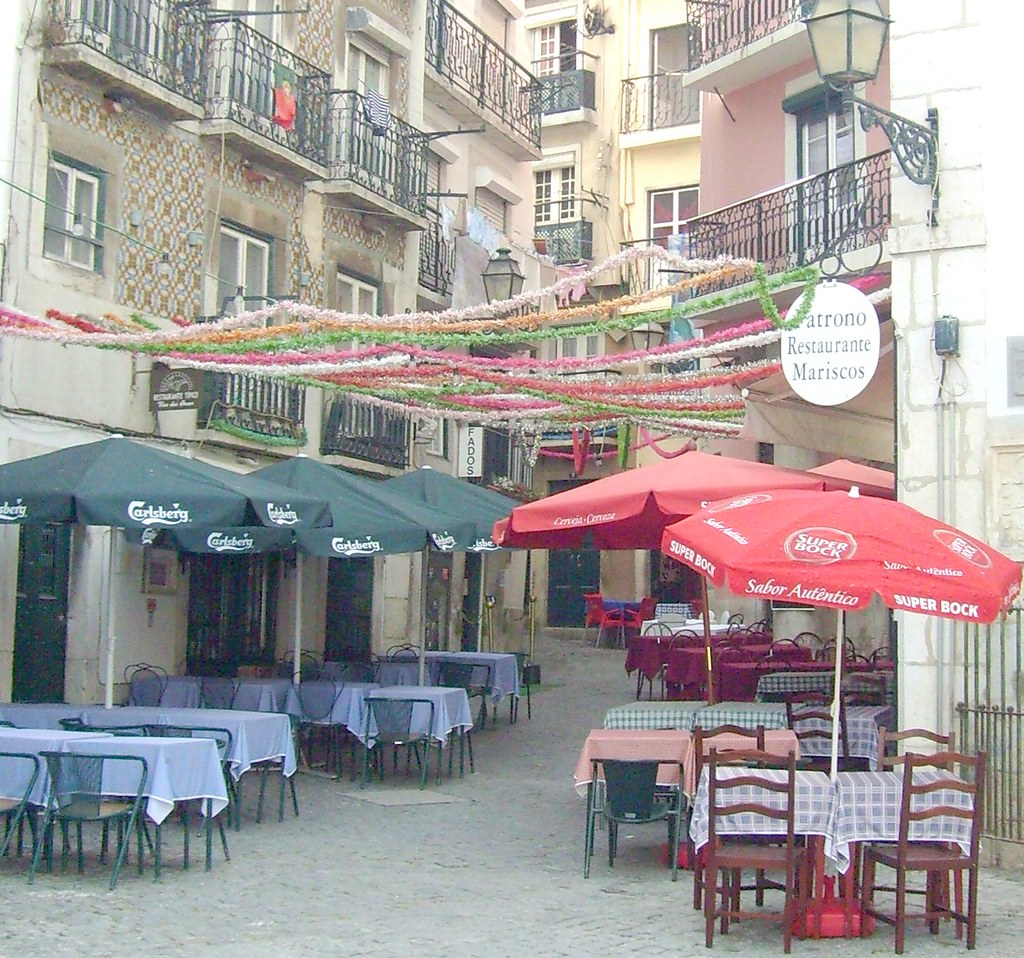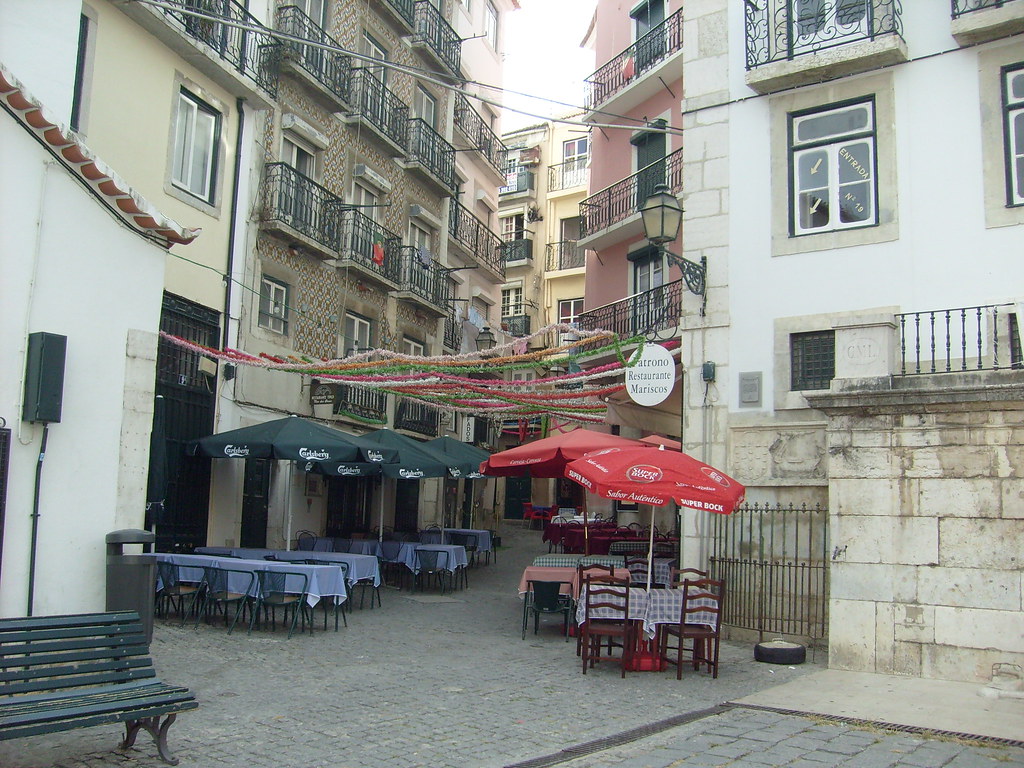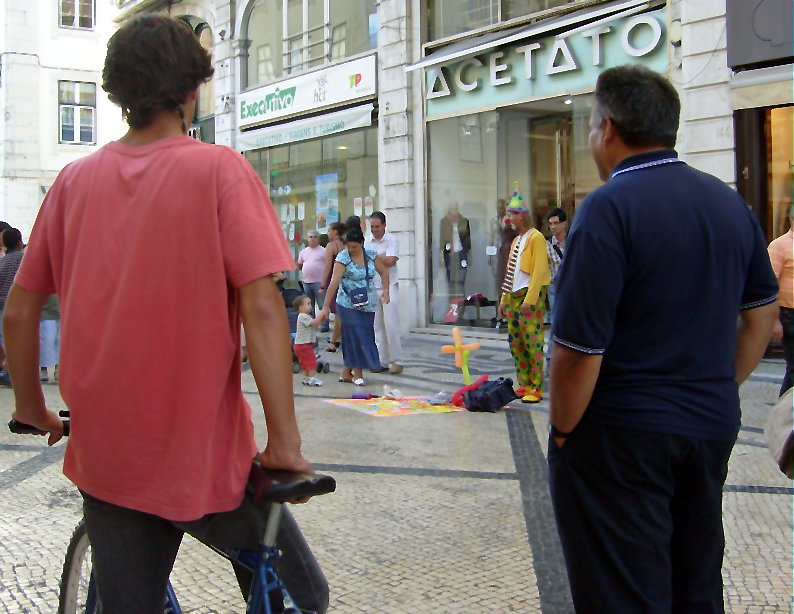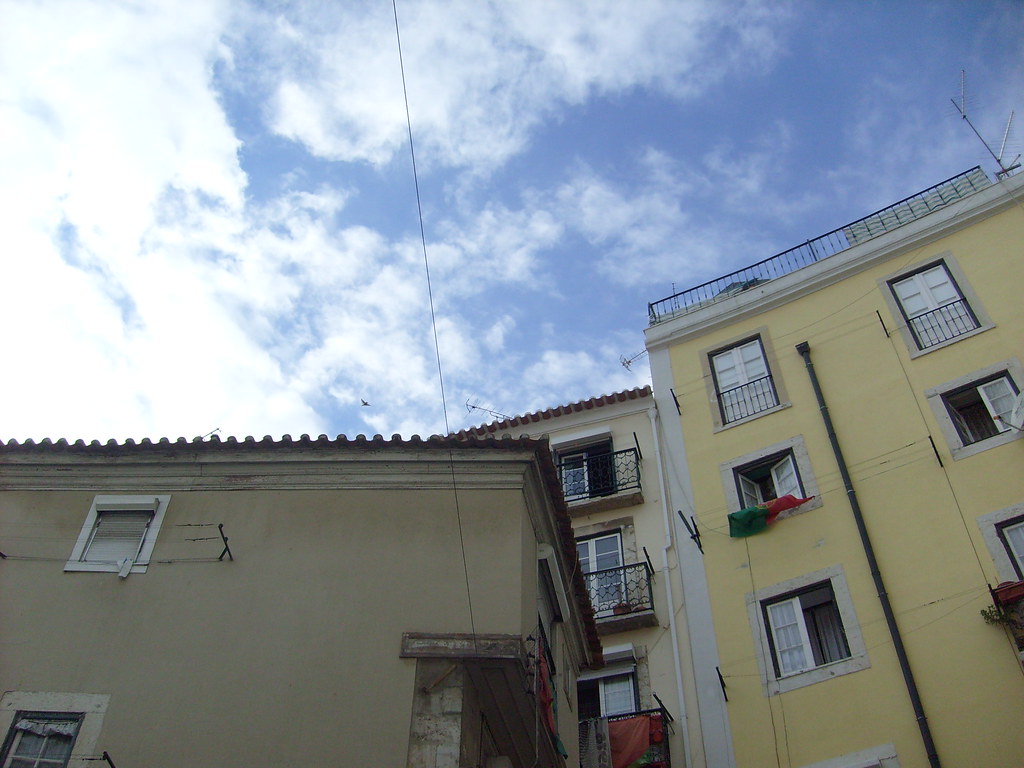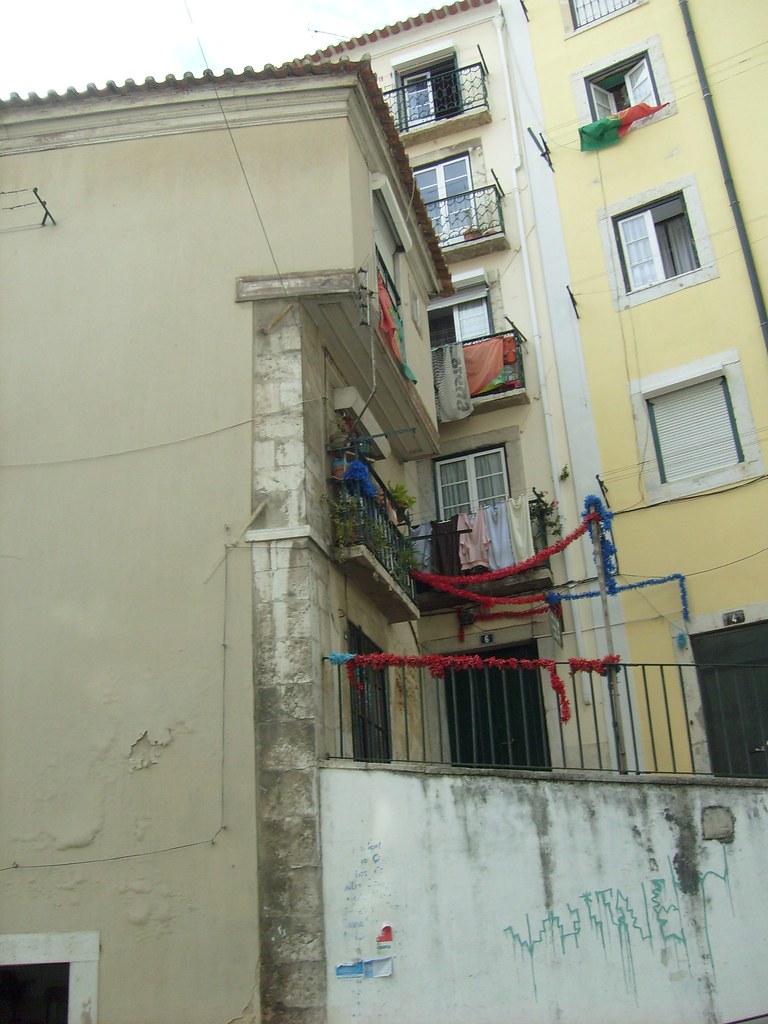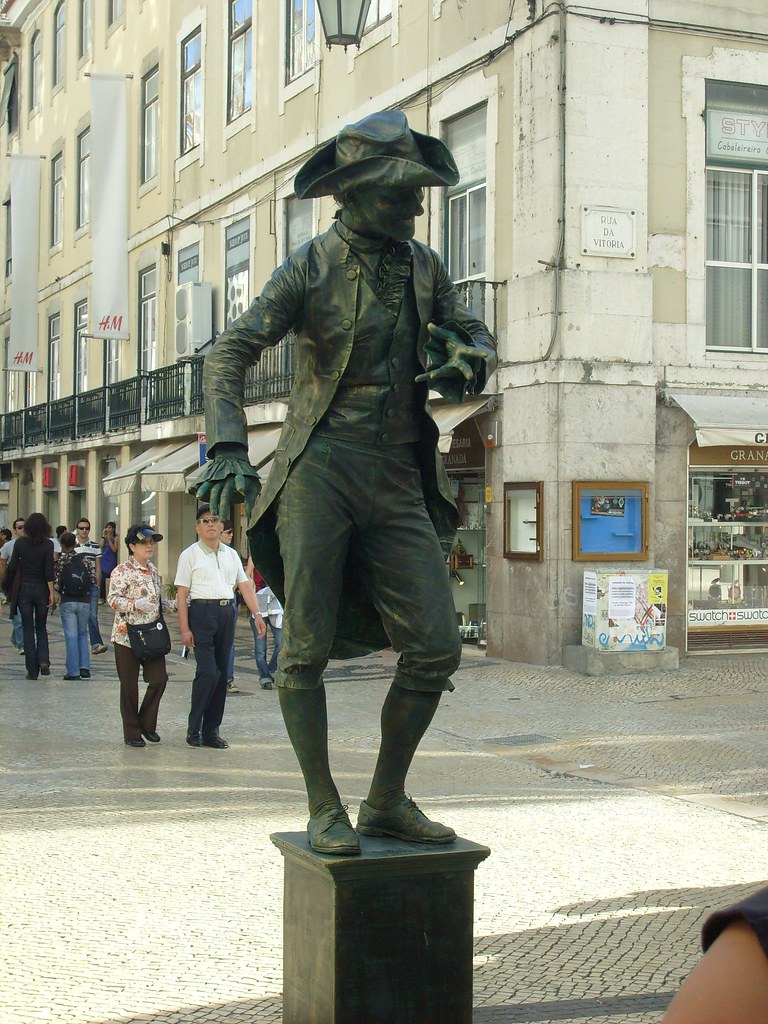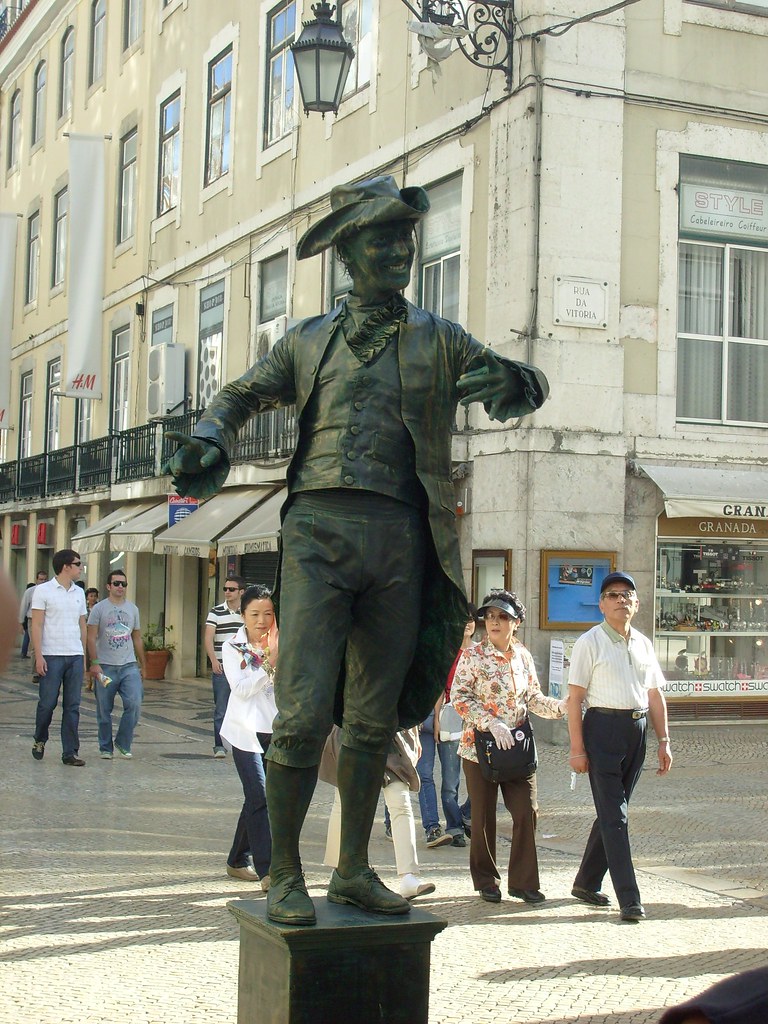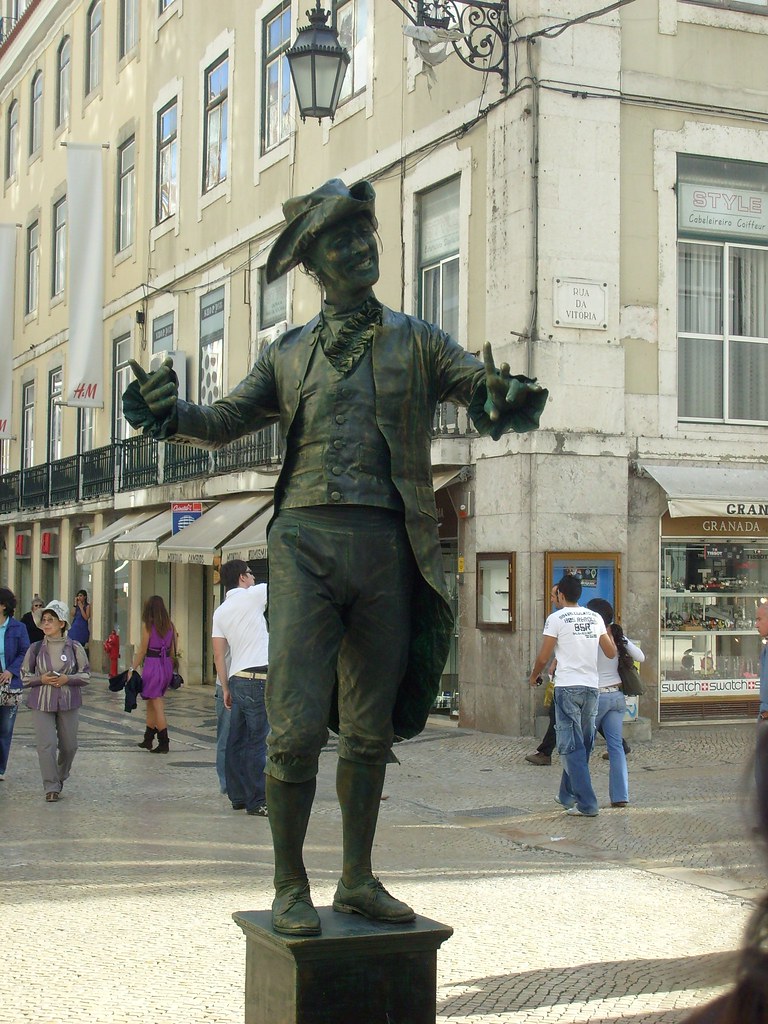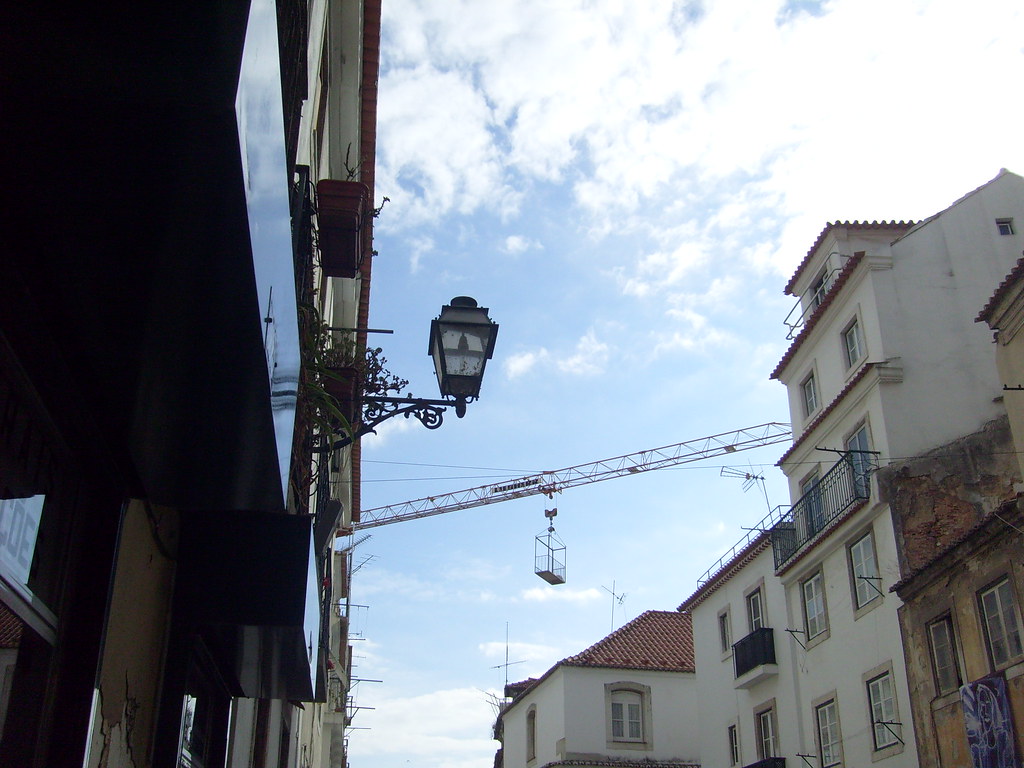31/10/2008
30/10/2008
29/10/2008
28/10/2008
27/10/2008
26/10/2008
#300- Alfama XLI

Chafariz de El-Rei
From Wiki:
"The Fountain of El-King, was the first public fountain in the city, was built in the thirteenth century in the reign of King Alfonso III of D. Dinis, taking advantage of excellent waters of the slope of Alfama.
The piping of water from outside the Bicas Cerca Moura date of 1487, allowing the supply of ships of the career of India.
The current facade dates from 1864, has been finished and put the platibanda the pinnacles and polls, a classicist architectural composition.
He suffered works in the reign of John II and Dom Manuel I. Due to the large numbers of people, the fountain was then the main source of drinking water, and the resulting delays and mix-up that are left in 1551, a standard comrades. The rules decreed that each of the six Bicas that the fountain was going to serve apaenas a social group: the first is supplying the blacks, mulattoes and Indians, second in the moors ; the third and fourth were reserved for boys and men white; is supplied in the fifth black women and girls in sixth and white women. Those who breach this law would be punished. It is not known exactly how many changes were implemented and they gave him the look current.
These days the fountain owns only three Bicas."[*]
25/10/2008
24/10/2008
#298 - Building Headquarters of the Group CGD
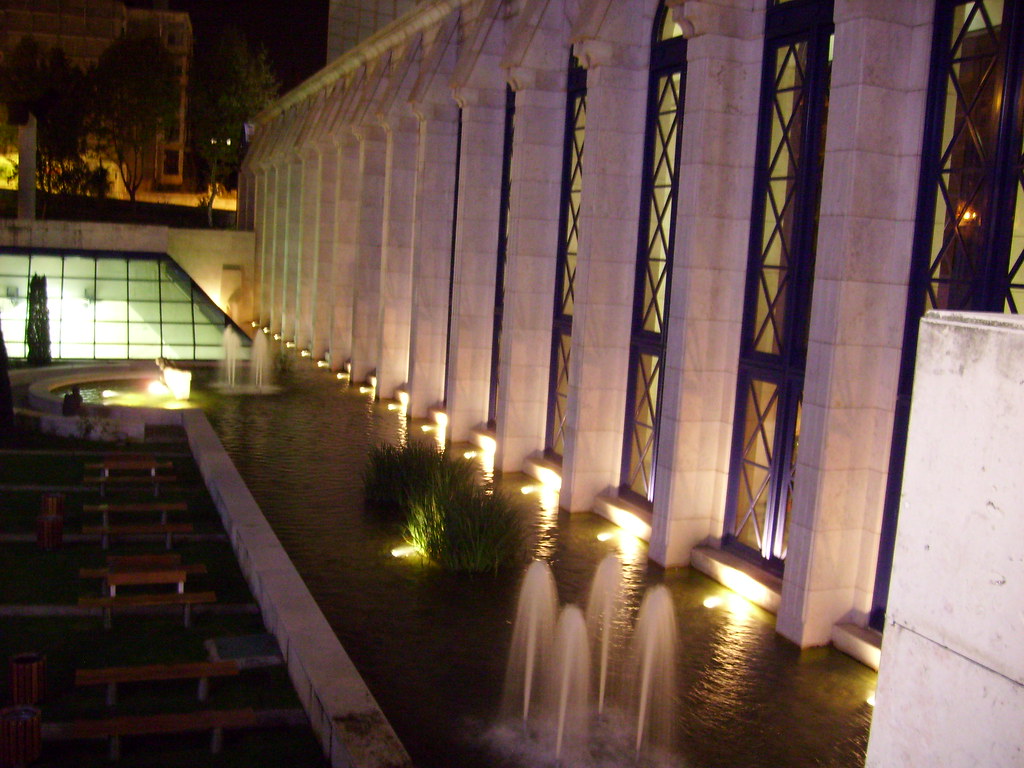
After approval by the Council of Ministers resolution No. 185/81, from August 13, work began on the ground looking for a well located in the urban area of Lisbon, with easy access, good transport services and with an area that allow a sufficient volume of construction for the new headquarters of the CGD.
The choice lies, then, in a field, between the Plaza de Campo Pequeno and praça de Londres, where until the end of the fifties had worked in the factories of Ceramics Company Lusitana, which had all the characteristics required.
In 1985, it launched a tender for which contributed 54 offices projects, and, initially, was selected in December, whose respective models are now exposed in the Central Agency Headquarters.
The project selected, authored the architect Arsenic Cordeiro, was then started, and had at the end of 1989, several amendments, as a result of the policy of modernization and regionalization and consequent rationalization plan.
The urban and architectural changes resulted in a reduction of the area built on 14,500 m2 (7.25%), which allowed an increase in green areas and the creation of a new road system linking the Avenues João XXI and Marconi, providing a greater flow of traffic location.
Concerns of socio-cultural have been taken into consideration, particularly by providing new public spaces and create a cultural zone in the building.
The first contract - for handling and containment of land - began in October 1987, and the occupation of the complex began in mid-1993.
Areas of the building-Seat
The building currently provides the best conditions of security and environment, and includes five main areas:
Administration and Central Directorate.
Areas of Socio-Cultural Activities
- Culturgest, cultural space that includes two auditoriums for conferences, seminars, conferences, concerts, theater and ballet and two galleries for exhibitions, halls of remote meetings, the press room and other structures of support.
- Social Services where a post clinical work with various specialties, nursing services and
special treatments, as well as an area for sporting activities.
Agency-Central Headquarters where you can find information personalized services, and treasury area of self-service.
Group companies CGD and Caixa Geral de retirements.
There are still areas of restaurants and their cuisine, printing, reproduction, archives, stores, parking for about 1150 cars, garages and maintenance of technical installations.
Works of Art
The building features several works of art in areas open to the public, particularly the ordinance, noting it is tapestry, from Julio Pomar and Julio Resende, tile panels of Graca Morais and Sa Nogueira, mosaic dome in vitreous of Eduardo Nery, reasons escultóricos of Lagoa Henriques, Ascanio Monteiro, Clara and Fernando Menéres conduct, as well as painting of Anthony Charrua." [*]
23/10/2008
#297 - Alfama XL

Next to some major cities there were almost always the Judarias, or the Moorish quarter, and separate enclosures for private housing of the Jews and Moors tolerated in society. Since the use in the average age left clear traces in Lisbon on behalf of two public Rights of access: the Jewish and Moorish quarter (name still remains in the street to the National Wheat) was finally within another haul of the wall, and so did the other the Judiaria Kingdom within the area bounded by walls.
It is here that was born in 1929 to the current House of Fado "Heart of Alfama" this house, formerly was known for the Tavern "Chico's deep pit" where, besides the eat traditional dishes at the same time is politically convivia. In fact it was here that the workers met to discuss and make anti-propaganda. There are testimonials from residents Alfama in themselves.
Today, "Heart of Alfama", typical restaurant, offers evenings of fado to customers who visit us, this is where the star is at the time that passes ... that the nights are unforgettable in coexistence between the flavors of traditional Portuguese food and good fortune." Tune Here to here a bit on typical fado music :)
Old Quarter Description
Some houses in this quarter still stand on foundations dating from the times of the West Goths, but the whole structure of the area was essentially shaped by the Arabs. Although no houses remain from this era, the confused arrangement of its maze of streets and alleyways does. The name Alfama is also derived from Arabian origins and probably evolved from the word al-Hama, the name of
Moors, Christians and Jews lived in the old quarter. Rua da Judiaria recalls one of its three former Jewish ghettos. Today it seems almost inconceivable that during the Middle Ages Alfama was once a respected, rich quarter where prosperous members of the bourgeoisie and aristocrats lived. From the 16th C. mainly fishermen, craftsmen, workers and sailors settled here, while in the 18th C. the area was temporarily regarded as a center of prostitution. Regarding higgledy piggledy Alfama the rational planning minister Pombal is supposed to have said that Lisbon could really do with a second earthquake.
Travel guides of the 19th C. paint a picture of an extremely gloomy, dirty and depressing area. Reference is made to the many cases of tuberculosis and the ever present danger of epidemics which arose as a result of unhealthy living conditions. Today the poorer classes continue to live here, mainly in houses in need of renovation. Insufficient heating, or a complete lack of it, and draughty walls in the small, closely built flats, where little sunlight penetrates, ensure poor living conditions, especially in winter. At present some of the houses in the inner city are being renovated as part of a redevelopment scheme.
To maintain the structure of the population that has evolved within the quarter, drastic rent increases are being avoided as much as possible. Even the inhabitants themselves pay attention to whoever becomes the next tenant of a flat which has become available.
This old quarter appears very picturesque to visitors in the summer. As the city of Lisbon is fully aware of Alfama's attraction to visitors, it gives financial support to the maintenance and improvement of the quarter's facades. Wandering through the labyrinth of winding alleyways, small archways and little flights of steps, many idyllic and picturesque corners are encountered.
Bright washing flaps in front of colorful house fronts, canaries sing from their cages hanging from windows and doors, numerous flower pots compensate for the lack of greenery in the streets. On warm days the shade offerred by the densely built houses explains the reasoning behind this style of construction.
Alfama's structure is such that few cars can enter there, emphasising the feeling of having been transported to a different time. Correspondingly, the atmosphere in the quarter is considerably defined by the different noises and smells. Life is lived for the most part on the street. The many tourists who stream through Alfama in the summer are tolerated in a serene and friendly manner.
In the evenings fado, the kind of music which was particularly popular in the 19th C., can be listened to in bars provided specially for tourists.
The route into Alfama leads via Rua Augusto Rosa/Rua do Limoeiro past the Sé Patriarchal and the Igreja de Santo António da Sé to the Santa Luzia viewpoint.
One of the "entrances" to the quarter, via the steps of Rua Norberto Araújo next to the Igreja de Santa Luzia, is located here. From the Tagus, a tour around the Largo do Terreiro do Trigo can begin through the Arco do Rosário."[*]
22/10/2008
#296 - Culturgest
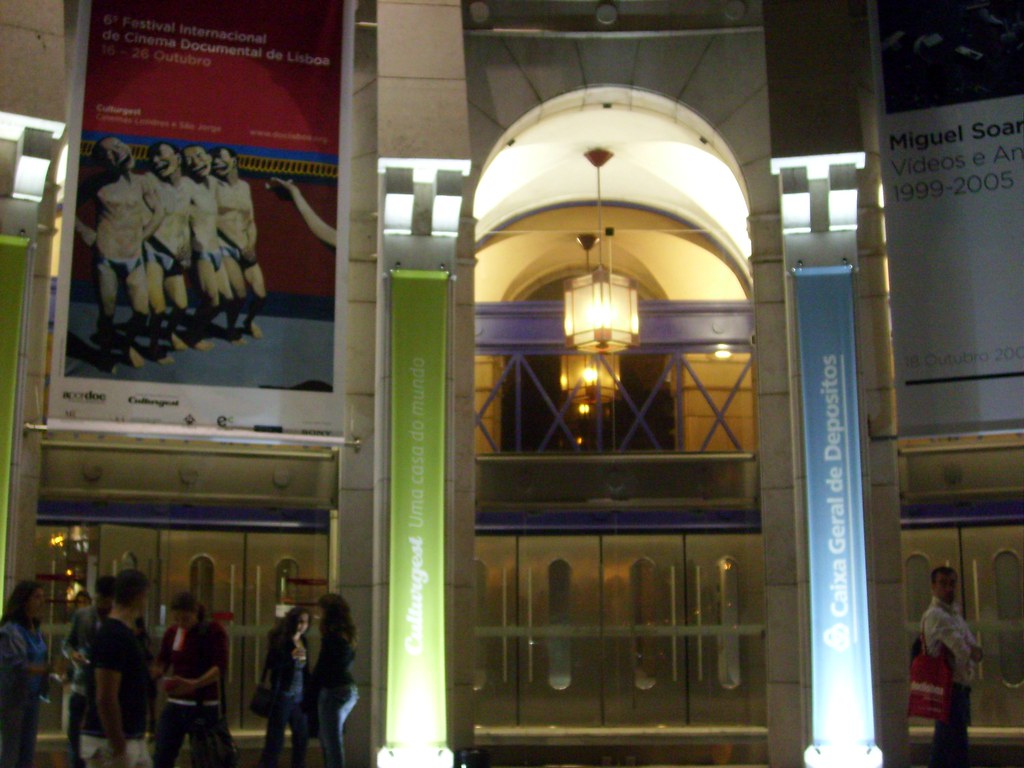
21/10/2008
20/10/2008
19/10/2008
#293 - Rossio Square The heart of Lisbon

"Rossio is the liveliest square in the city, where people stop to sit and relax, or for a drink at the several atmospheric cafes with outdoor sitting .
On either side of the square are two baroque fountains, and in the center is a monument measuring 27 meters in height. It consists of a pedestal with marble allegories of Justice, Wisdom, Strength, and Moderation, qualities attributed to Dom Pedro IV, whose statue stands on top of the monument.
In the 19th century the square was paved with cobblestones in wave patterns, a design seen today in many other pavements all over Portugal, and that has spread to Portugal's former colonies from Rio de Janeiro (Brazil) to Macao (China).
On the north side of the square is the Dona Maria II National Theater, a monumental neoclassical building built in the 1840s. The portico has six Ionic columns (originally from the Church of St. Francis, destroyed in the 1755 earthquake), and crowning the pediment is a statue of playwright Gil Vicente." [*]
| Where: Baixa How: Metro - Rossio Station |
| Sights Nearby |
Rua Augusta - The city's main shopping street.
Restauradores Square - Large busy square.
São Domingos Church - A church marked by tragedy.
Figueira Square - Busy square and transporation hub.
Comercio Square - Monumental riverside square.
Municipal Square - Home of the City Hall palace.
Conceição Velha Church - Church that survived the Great Earthquake.
Santa Justa Elevator - An Eiffel Tower-like landmark with views over the city.
Rua das Portas de Santo Antão - Pedestrian street lined with seafood restaurants.
Avenida da Liberdade - The city's main avenue.
Click here to see its twin
18/10/2008
#292 - Alfama XXXVIII
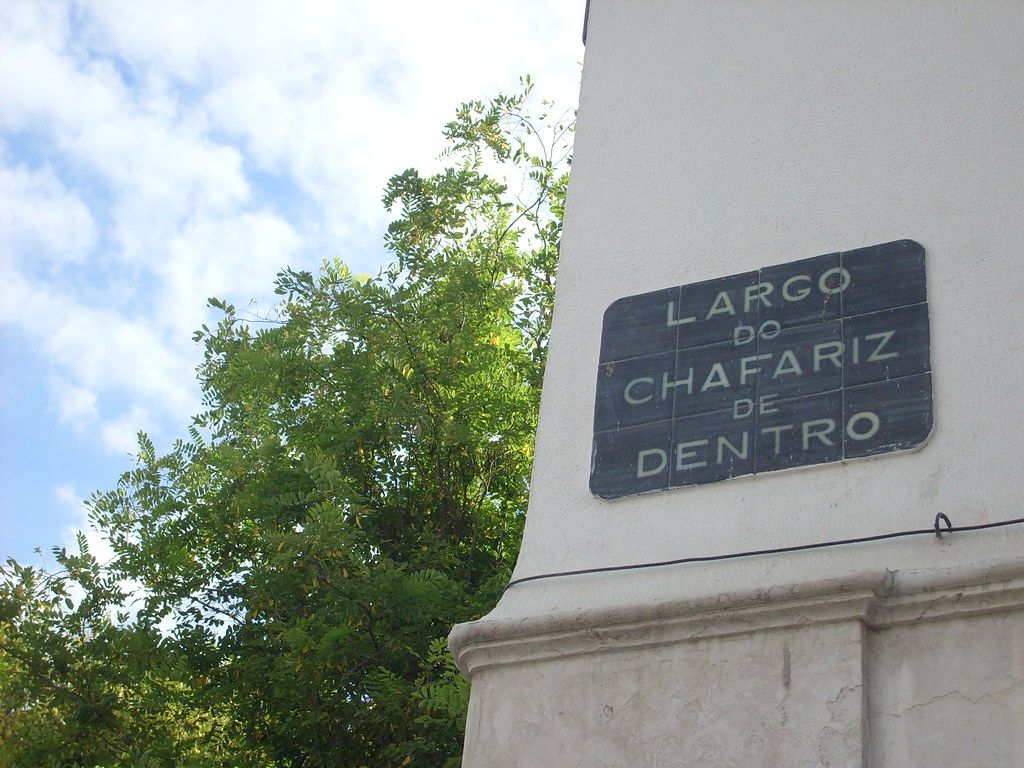
On the Largo do Chafariz de Dentro is located the unobtrusive fountain of the same name. It was called Chafariz de Dentro (inner fountain) as it was unusually positioned, i.e. within the old city walls. Originating from the 14th C., it once also bore the name "Horses' Fountain", as the gargoyles portrayed two bronze horses heads. These were stolen in 1373 by Spanish troops. The fountain was built in its current form in 1622.[*]
(Sorry, but I didn't shoot the fountain! LOL)
17/10/2008
#291 - Rua Augusta peddlers
16/10/2008
#290 - Alfama XXXVII
With its narrow passages and vantage points, Alfama is one of the oldest and most typical quarters of Lisbon that blends Roman and Moorish architecture. Its name Alfama has its roots in the Arabic Al-Hama, meaning springs or fountains. Like its name suggests, this neighborhood has distinctively Arabic influence, and it is incomparably different from Chiado’s European grid. Built on a rock-hill, this medieval quarter is the only neighborhood that survived the Great Earthquake of 1755. Once an upper-class Moorish residential, today is a working-class quarter packed with small grocery shops and restaurants. The best time to visit is during Festas dos Santos Populares in June. [*]
